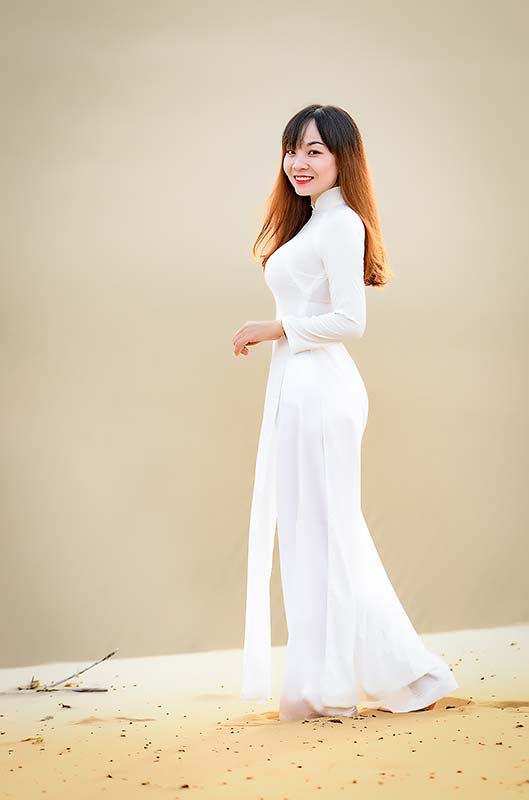Hi I'm Khanh Phan, I'm 34 and I'm from Vietnam. I was born in 1985.
I was born in Quỳnh Phụ, Thái Bình, a mainly agricultural land. My parents were farmers. I currently work at the bank and I am a bank teller.
Photography is my passion. After a broken marriage in 2017, I was heartbroken and desperated and losing faith in life. Then I thought, I couldn't be like this forever, I needed to get over it and I bought a camera.
First I went to take photos of flowers in a park near my house, then I realized that Vietnam, my beloved country, has so many hidden fabulous natural and cultural scenes that only few places in the world have. I have been to many places, met and learned about the different regional customs and practices. I then took those pictures, posted them on social media, and became popular with my friends. Photography has changed my life, got me through difficult times and is now my only personal joy today.
At first I received strong opposition from my family. My mother thinks photography is too dangerous. I often have to go to the sunrise photograph from 4 am, come home after sunset. There are nights when I wait for the night dew, or milkyway, I have to be outside all night. My mother worried that I would be in danger of being robbed because women who go out late at night are very dangerous. And with my income, my mother is afraid that I will not be able to take care of my son and maintain a stable life if i pursues photography because photographic equipment is very expensive.
I have never taken a class in photography and photoshop, I myself researched and practiced on photoshop and learned the experience for myself. I have been taking pictures for 2 years.
Finally, with my own efforts, I received some small awards in photography, my mother believed in me and she supported my work.
Vietnam is a country with many feudal dynasties. The Vietnamese family is mainly patriarchal. Today Vietnamese women know how to fight for gender equality, a few participate in politics and hold important positions in the state, but the gender discrimination is still quite clear.
In addition to working for a living as a man does, we also hold the maternity role, take care of childeren and family, do the houseworks and rarely have the time to do the things we love.
In order to persue my passion for photography, I have to sacrifice my happiness. I could not get married again. My income is about 15 million VND per month (about 600$ per month). With that income, it is enough to raise my son and still has a small part of it for photography enthusiasts including equipments and travel expenses. I often had to take pictures alone, and experienced many life-threatening things like staying in the cemetery alone at night when waiting for the sunrise at the churchs in Thanh Xa, Bao Loc, Lam Dong, wrestling with waves at Hang Rai, Phan Rang seashores, climbing mountains, or wading into swamps. Sometimes I forget I'm a woman.
I have won a number of awards such as Sonyworld award 2019, Skypixel 2019, Drone award of Siena 2019 but some people do not recognize my ability and efforts. They think I'm lucky and for the reason that I am a woman.
Vietnam from Above
Vietnam is a beautiful country with a diverse culture. Each region will have many unique cultural features with traditional villages that are hundreds of years old. The Vietnamese people stick to the traditional profession and take it as a way of gratitude to their ancestors. Although the traditional profession is very hard and low-income compared to other modern jobs, the artisans still stick to the profession as flesh and blood and want to pass it on to future generations.
The daily lives and jobs of Vietnamese workers are recorded from above.
